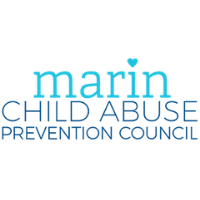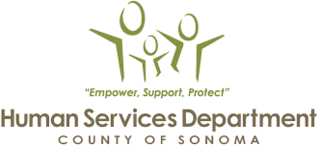
It’s a new year, and time once again to celebrate all the parents and caregivers raising children and adolescents across our community. January is Positive Parenting Awareness Month and counties across California, including Sonoma County, along with the California legislature will pass resolutions, declaring January 2023 as Positive Parenting Awareness Month across the state.
Raising children and youth to become healthy, confident, capable individuals is the most important and rewarding job parents and caregivers have, but sometimes it’s also the hardest job. That’s why proven strategies and support from programs such as the Triple P – Positive Parenting Program are here to help.
Even in the best of times, stress shows up in our lives. Sometimes, it comes from day-to-day events like a big test at school or a high-stakes situation at work. Other times, it comes from major life events like a family split apart by divorce or the death of a loved one. The ability to cope with strong feelings in response to these events—whether they are routine or major—is called emotional resilience.
This year, throughout Positive Parenting Awareness Month, we’re highlighting the building blocks of emotional resilience. As adults, we can help children and teens learn and practice emotional resilience skills so that they can cope with stressful life events and emerge stronger and happier. When children and teens (and adults) have the tools and support to use positive ways of coping with strong feelings, they’ll be less likely to turn to negative ways of coping, such as acting out, using alcohol or drugs, or harming themselves.
So how can we help children and teens build their emotional resilience muscles? We can start by teaching skills in these six building blocks:
1. Recognize, understand, and accept feelings. Ups and downs are normal, so let kids know it’s OK to have different feelings. Talk about their experiences and feelings and help them learn to recognize emotions in themselves and in others. Don’t be afraid to share your own feelings, too.
2. Express feelings appropriately. When kids express their feelings and manage tough situations in safe, healthy ways, recognize this with your attention and observations (e.g., “I’m proud of you for telling your friend why you were upset.”). If they’re expressing their feelings in unsafe or inappropriate ways, such as yelling, swearing, or hurtful behaviors, recognize that too, with an emphasis on what they can learn from the outburst. Acknowledge that they’re upset first, tell them what to stop doing (“Please stop yelling”) and what to do instead (“Let’s take a deep breath”). As you do this, demonstrate the behavior you’re expecting — e.g., speak calmly when telling them to stop yelling.
3. Develop a positive outlook, including optimism, interest in things, and contentment. A positive, optimistic outlook can build your child’s confidence and contribute to emotional wellbeing; curiosity helps them learn. You can encourage both by pointing out the good side of events and experiences, being available and interested when your child wants to show you something, and asking your own questions about what they’re doing and creating. Being appreciative and grateful, and encouraging those feelings in your child, can build contentment.
4. Develop coping skills. Teach children and teens problem-solving skills by playing games, setting a good example, and breaking a bigger problem down into smaller pieces. Let them practice their problem-solving skills instead of solving everything for them. Positive self-talk—"I’ve got this!”—is a great life skill, and so is knowing how and when to ask for help.
5. Deal with strong feelings and unpleasant situations. We can’t completely protect children and teens from negative feelings and situations, but we can help them learn to manage their emotional responses. Stop and listen, acknowledge their feelings, and support them to find their own solutions. If needed, encourage them to take a break and return to the situation later in a calmer moment.
6. Manage stressful life events. When big feelings emerge in response to major events, let your child be upset and talk about why, reassure them, and try not to fix or solve everything in that moment. Encourage them to use their coping skills and check in on them, but be ready to seek more help if needed—and remember to take care of yourself, too!
Final Thoughts: We can learn to be more emotionally resilient at any age, but life is much smoother if we learn early!
CPI's monthly parenting article provides tips for families raising children, based on the world-renowned Triple P – Positive Parenting Program, available in Sonoma County at CPI. If you have a question or idea for a future column, please email anneb@calparents.org
This article is created by Nicole Young, the mother of two children, ages 17 and 21, who also manages Santa Cruz County's Triple P - Positive Parenting Program. Scientifically proven, Triple P is available locally through the Child Parent Institute. Our classes are listed at calparents.org/classes.
En Espanol
Es un nuevo año, y el momento otra vez de reconocer a todos los padres y cuidadores que están criando niños y adolescentes en nuestra comunidad. Por el undécimo año seguido, la Junta de Supervisores del Condado ha colaborado con Primeros 5 Santa Cruz County para declarar que enero de 2023 es el Mes de Concientización de la Crianza Positiva, uniéndose con otros condados en California y la legislatura de California, la cual aprobará una resolución declarando a enero de 2023 como el Mes de Concientización de la Crianza Positiva en todo el estado.
Criando niños y jóvenes a ser individuos saludables, con confianza en sí mismos y capaces, es el trabajo más importante y gratificante que tienen los padres y cuidadores, pero también es el trabajo más difícil. Es por eso que las estrategias comprobadas y el apoyo de programas tales como Triple P – Programa de Crianza Positiva están disponibles para ayudarle.
Incluso en el mejor de los tiempos, el estrés aparece en nuestras vidas. A veces, se produce por los eventos cotidianos como una prueba importante en la escuela o una situación en que mucho depende en el trabajo. En otras instancias, proviene de eventos significativos como una familia dividida por el divorcio o la muerte de un ser querido. La habilidad de tratar con las emociones fuertes en respuesta a estos eventos—ya sean cotidianos o significativos—se llama resiliencia emocional.
Este año, durante todo el Mes de Concientización de la Crianza Positiva, estamos destacando los elementos fundamentales de la resiliencia emocional. Como adultos, podemos ayudarles a los niños y adolescentes a aprender y practicar las habilidades de resiliencia emocional para que puedan tratar con los eventos estresantes de la vida, y por resultado ser más fuertes y felices. Cuando los niños y adolescentes (y los adultos) tienen las herramientas y el apoyo para usar maneras positivas de tratar con emociones fuertes, es menos probable que acudan a maneras negativas de afrontar, tales como tener conductas desafiantes, usar alcohol o drogas, o dañarse.
¿Entonces cómo podemos ayudar a los niños y adolescentes a fortalecer sus músculos de resiliencia emocional? Podemos empezar con enseñarles las habilidades de estos seis elementos fundamentales:
1. Reconocer, comprender, y aceptar los sentimientos. Los altibajos son normales, por lo tanto hágales saber a los niños que está bien tener diferentes sentimientos. Hablen sobre las experiencias y los sentimientos de ellos y ayúdeles aprender a reconocer las emociones en sí mismos y en los demás. No tenga miedo de compartir sus propios sentimientos también.
2. Expresar los sentimientos apropiadamente. Cuando los niños expresen sus sentimientos y manejen situaciones difíciles de maneras seguras y saludables, reconózcalo con su atención y observaciones (por ejemplo, “Estoy orgullosa de la manera en que le dijiste a tu amiga por qué estabas molesta.”). Si están expresando sus sentimientos de maneras no seguras o inapropiadas, tales como gritar, decir groserías, o conductas hirientes, reconozca eso también, con un énfasis en lo que pueden aprender del arrebato. Primero reconozca que está molesta, dígale lo que dReconocer, comprender, y aceptar los sentimientos. Los altibajos son normales, por lo tanto hágales saber a los niños que está bien tener diferentes sentimientos. Hablen sobre las experienebe dejar de hacer (“Por favor deja de gritar”) y lo que sí debe hacer (“Vamos a respirar profundamente”). A medida que haga esto, demuestre la conducta que usted espera — es decir, hable calmadamente cuando le dice que deje de gritar.
3. Desarrolle una perspectiva positiva, incluyendo el optimismo, tener interés en las cosas, y satisfacción. Una perspectiva positiva y optimista puede fomentar la confianza de su niño y contribuir al bienestar emocional; la curiosidad les ayuda a aprender. Usted puede animar las dos cosas al señalar el aspecto positivo de los eventos y las experiencias, estar disponible e interesado cuando su hijo le quiere mostrar algo, y hacer sus propias preguntas sobre lo que están haciendo y creando. Demostrar aprecio y agradecimiento, y animar esos sentimientos en su hijo, puede crear satisfacción.
4. Desarrollar habilidades de afrontamiento. Enseñe las habilidades de resolución de problemas a los niños y adolescentes al jugar juegos, poner un buen ejemplo, y dividir un problema más grande en elementos más pequeños. Permítales practicar sus habilidades de resolución de problemas en lugar de resolver todo para ellos. Hablarse a uno mismo de manera positiva—"¡Puedo hacerlo!”—es una excelente habilidad para la vida, así como saber cómo y cuándo pedir ayuda.
5. Tratar con sentimientos fuertes y situaciones desagradables. No podemos proteger a los niños y adolescentes de sentimientos y situaciones negativas, pero si podemos ayudarles a manejar sus respuestas emocionales. Pare y escuche, reconozca sus sentimientos, y deles apoyo para encontrar sus propias soluciones. Si es necesario, anímelos a tomar un descanso y regresar a la situación después en un momento más calmado.
6. Manejar los eventos estresantes de la vida. Cuando surgen emociones fuertes en respuesta a eventos significativos, permítale a su hijo sentirse molesto y hable sobre la razón por la que se siente así, dele consuelo, y no trate de arreglar o resolver todo en ese momento. Anímelo a usar sus habilidades de afrontamiento y fíjese como sigue, pero esté preparado a proveer más ayuda si es necesario—¡y recuerde de cuidar de sí mismo/a también!
Reflexiones finales: Podemos aprender a ser más resilientes emocionalmente a cualquier edad, ¡pero la vida es mucho más fácil si lo aprendemos temprano!
El artículo mensual sobre crianza de CPI proporciona consejos para las familias que crían niños, basados en el programa de crianza positiva Triple P de renombre mundial, disponible en el condado de Sonoma en CPI. Si tiene una pregunta o idea para una columna futura, envíe un correo electrónico a anneb@calparents.org
Este artículo fue creado por Nicole Young, madre de dos niños, de 17 y 21 años de edad, quien también administra el Programa de Paternidad Positiva Triple P del condado de Santa Cruz. Científicamente probado, Triple P está disponible localmente a través del Child Parent Institute. Nuestras clases se enumeran en calparents.org/classes.










